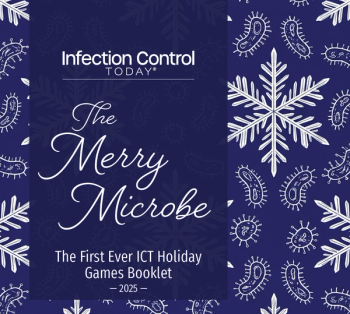
Infection Control Today - 03/2004: An Instructors Guide
An Instructors Guide to SP/CS Certification Success
By RichardP. Blasko, MBA, CSPDT, CRCST
Healthcare providers haveacknowledged with increased frequency that quality patient care flows far deeperthan just direct patient contact. The behind-the-scenes unsung heroes of sterileprocessing/central service (SP/CS) are an integral part of the prevention ofcross contamination. Recruitment, training and retention of SP/CS staff can besuch a daunting task that managers must assume a proactive approach if they areto provide a high quality product to their customers on a consistent basis. Buthow can this be accomplished within the assiduous, high-stress environment ofsterile processing?
Certification requirement is the key. If certification is nota requisite at your facility, it should be. Not only does certification of yourtechnicians demonstrates to your customers that your staff has achieved anexceptional level of knowledge and expertise, it provides assurance thatindustry standards of infection control are not merely text in a policy manual,but standard protocol in your facility. Finally, certification inhibitscomplacency and allows your staff to endeavor to improve processes throughcontinued education.
To achieve certification, you will need to conduct in-housetraining of your technicians to prepare them to pass a nationally recognizedcertification exam, thus confirming expertise in the field. Employing a simplefour-step process, which I have found successful in the instruction of adultlearners, can heighten the efficacy of your training.
Step One: Instructor Preparation
To maximize your effectiveness you need to execute thefollowing steps prior to initiating the first class:
- Read and delineate the entire textbook. This will serve as your lecture notes. A thorough knowledge of the text content is imperative.
- Complete all work in related study guides.
- Research the primary areas of sterile processing (i.e.,microbiology, anatomy/ physiology, decontamination, assembly, instrumentation,sterilization, sterile storage and distribution). Acquire additional literature to reinforce the text material.
- Formulate post-tests for all hand-outs.
- Compile at least two midterm exams and a final exam in multiple-choice format to provide an opportunity to identify student progress and yield time to rectify any deficiencies encountered.
- Construct outlines of pertinent hands-on lab studies. Certification study guides can identify key techniques.
- Prepare visual aids to demonstrate topics of prominence.
- Elicit assistance from vendors to reinforce textinformation further. Instrument repair companies are lucrative resources.
- Compile a syllabus of planned lessons for each class.
- Finally, be prepared. In fact, advocate your students to challenge any answers to exam questions. This promotes involvement of the students and allows them to secure a firm grasp of the material.
Step Two: Student Preparation
The first class meeting is the most crucial. It is reasonableto postulate that the students in your course have probably not recently been ina formal classroom environment. Your responsibility is to not only alleviatetheir stress, but to afford them techniques for studying the material toincrease their effectiveness. Listed below is a 10-point handout that I reviewat the outset of the first class. These techniques bestow the students withcompetent study habits to allow them to ascertain the information essential forsuccess.
10 Rules for Effective Learning
- Find a quiet place to read or study. Your mind cannotconcentrate on more than one concept at a time. Do not read/study with the radioor TV on. Everyones situation is different. You must find a way to allow yourself quiet time.
- Read each chapter one or two days before class. Read from start to finish without interruptions, as this will provide an overall picture of content. Do not take notes at this point.
- Come to class prepared to listen and participate. If you have a question and do not ask, that question is sure to appear on the certification exam.
- Do not attempt to write notes on everything that is said in class. I will be handing out my lecture notes to utilize for studying.
- After the lecture on a chapter, re-read the chapter. Read at a slower rate and take notes/highlight at this point,if desired.
- Come to lab studies prepared to participate. The best way to learn is by doing.
- Ask questions! Remember that any question you have now will definitely appearon the certification exam.
- There are four ways to learn: reading, listening, watching and doing.
- Study! Begin to study at least one week before any exam. Waiting until the last night has never worked and will never work.
- Relax and have fun. If you have prepared yourself for the exam, you should pass.
Two aforementioned items must be discussed at this point.First, you may dispute that providing written lecture notes to the students isadvantageous; however, you are teaching this course, thus you possess (or youshould possess) a singular knowledge of the material. Who better to furnish thestudents with a logical outline of the information to augment their learning? Inaddition, I also dissuade the practice of note taking during class. It is nearly impossible for the student to write notes fastenough during class that will actually prove beneficial at a later point. And ifthe student is diligently writing, how efficiently is he or she listening toyour lecture?
After discussing this information you must now present therequirements of the certification board to the students. Once again, your dutyas the instructor is to replete the students with a full understanding of thecertification exam requirements to prepare themselves adequately for success.You are also establishing the groundwork for continuing education of yourtechnicians to stay abreast with current technologies.
Step Three: Instruction of Material
Presentation of the material must embody all three of theprinciples of auditory, visual and tactile techniques. Each individual willbring to class their own unique process for learning. In addition, adultlearners have personal lives which may impose distractions to learning. Byincorporating all three educational methods you guarantee that the material ispresented in a manner that can be easily assimilated.
- Auditory. Auditory instruction commences withrequiring students to read each chapter prior to the lecture. Lecturing on the material supplements their reading andentitles students to acquire an overall picture of the text. Discourage frantic note taking at this point in class. Remindthe students that they will receive a copy of your lecture notes, thus copiousnotes are not essential in class. This promotes active participation of thestudents during lectures. When you can institute a verbal interaction between thestudents it not only increases retention, but it detains their interest. Themost rewarding comment I received from a former student was that I made theclass interesting, even during the tedious chapters. Two techniques that Iutilize to spice up my lectures are first to add humor whenever feasible. Humor keeps the students attention and encouragesparticipation and interaction, which assists in retention. Next, you need tocorrelate the concepts of sterile processing to real-life experiences that canallow the students to comprehend the material. For example, when discussing distribution methods, it isbeneficial to equate the concepts of par levels and reorder points to groceryshopping. The students realize that they are already managing distributionmethods each time they procure a list concerning common household items. Thisprotraction of the important points of your lecture will heighten the studentsunderstanding of the material being presented.
- Visual. Visual presentation of the material is thenext step. Visual instruction does not merely entail overhead slides of lecturenotes. In fact, I do not employ overheads, at all. Overhead slides of lecturenotes further abet note taking, thus defeating the purpose of studentparticipation. Visual instruction is lab study. Subsequent to a lecture on the decontamination area, mystudents spend the next class in this area at an actual facility. Demonstration of all the material and techniques allows thestudents to qualify the concepts that have been discussed in class. Visual learning techniques also take the form of homeworkassignments. Although certification exams utilize a multiplechoice format, it isbeneficial to incorporate essay or short answer questions for homework. Thesetypes of questions require the student to read fully the text and formulate theimportant concepts. When complete, answers to essay questions also provide acomprehensive study tool.
- Tactile. Tactile learning is the hands-onmethod. This technique is by far the most efficacious and meaningful learningtool when instructing sterile processing concepts. Your lab study shouldcomprise at least one-half the time allotted to the students actually executingthe techniques. The students will learn by doing. An excellent hands-on technique that I apply for identifyingprocessing errors is to assemble various items in peel-pouch, sterile wrap andrigid containers and deliberately commit numerous errors in processing (i.e.,partially sealed pouches, missing tamper locks, etc.). Be creative. After thestudents have had an opportunity to examine the items, you can utilize theiranswers to stress the proper processing techniques. It is gratifying to seecomprehension in your students when they begin to recognize that the conceptsthat you have been attempting to teach them are indeed being realized.
Step Four: Exam Preparation
The final step in the process is assuring that your studentsare prepared for the stress of certification exam day. At least three formalexams should be given in a multiple-choice format. Review the certificationboards test requirements and conform to them during your exam. This will permitthe students to emulate the pressure and stress of exam day before ittranspires. And it will afford you the opportunity to identify and correct anydeficiencies. Exam questions need to be arduous and constrain the student todiscern fully the concepts and not just memorize answers. Your exams will also later be utilized as a learning tool.Encourage the students to debate any incorrect answers that they believe are, infact, correct. This advocates the student to gain an astute knowledge of thematerial. Ask why or why not when reviewing questions. For example, knowledge ofproper placement of a biological test pack is not sufficient. However, if thestudent can construe why a test pack is put near the drain they have takenownership of the information. Finally, change the wording of the questionsduring review and prompt students to explain how and why the answer would bedifferent.
In conclusion, providing your technicians with a formalinstructional program not only contributes to an improvement of certificationpassage, but you will also be assured as to the level of knowledge they haveattained. By applying the principles discussed in this guide, we have achieved a100 percent pass rate for the 35 students who have participated in ourcertification prep course. Your customers will realize the benefits once staffcomprehends why it is necessary to adhere to protocols of infection control.
Richard P. Blasko, MBA, CSPDT, CRCST, is supervisor ofsurgical processing and support services at Akron General Medical Center inAkron, Ohio. In addition, he is the instructor of the sterile processing/centralservice course at the University of Akron.
Newsletter
Stay prepared and protected with Infection Control Today's newsletter, delivering essential updates, best practices, and expert insights for infection preventionists.






